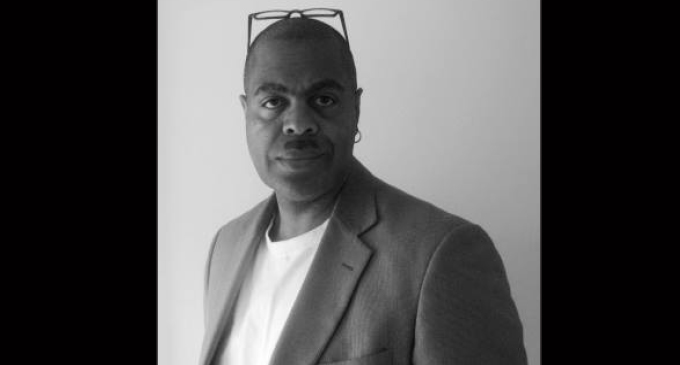Artist Leo Rucker shares his journey
No matter if you’re spending time downtown at Innovation Quarter, grabbing a bite to eat at Sweet Potatoes, visiting Carter G. Woodson School, Old Salem, or the Forsyth County Hall of Justice, it’s nearly impossible to travel the city without seeing some of Rucker’s work. The post Artist Leo Rucker shares his journey appeared first on WS Chronicle.

Over the past two weeks The Chronicle has been highlighting living legends right here in our community. This week we sat down with Leo Rucker to discuss his love of art and much more.
No matter if you’re spending time downtown at Innovation Quarter, grabbing a bite to eat at Sweet Potatoes, visiting Carter G. Woodson School, Old Salem, or the Forsyth County Hall of Justice, it’s nearly impossible to travel the city without seeing some of Rucker’s work.
A native of Winston-Salem, Rucker grew up in the heart of East Winston near 14th Street and Hattie Avenue. When discussing his start, Rucker said he can still vividly recall sitting on the porch of his childhood home. “It’s a weird thing, I can see myself sitting on the porch … and for whatever reason somebody gave me some paper, probably to keep me quiet,” Rucker continued.
“Our next door neighbor came over and saw me drawing and she thought it was fascinating and that became the inspiration to really start, because she did commission my first painting. It was a painting of her husband who fought in World War II.”
As he grew older Rucker continued to hone his skills and teachers started to take notice of his talent. Rucker said in art class throughout grade school teachers would just let him do his own thing. “My teachers never made me do projects in class and stuff like that because all my teachers knew Leo was good,” he said. “Out of all my years in school I probably did three assignments in art class … they’d just sit me in a corner and let me do my own thing.”
After graduating from East Forsyth High School, Rucker took his talents to Rutledge College where he earned a degree in commercial art. Rucker said it was at Rutledge that he really started to grow as an artist, thanks to a professor who was determined to challenge him.
“I had one teacher who was like, I’m going to push you because you think you’re good, so he really pushed me to the next level.”
Today Rucker is well versed in pencil, watercolor, oil, acrylic, and pastels. Over the years Rucker has become known as “the guy” when it comes to getting a commissioned mural, portrait, or any other painting.
Rucker’s most popular piece is the Depot Street mural located on East 7th St. between Patterson Avenue and Research Parkway. The mural, which was unveiled in 2020, features more than two dozen people or buildings that reflect the rich history of Depot Street.
During the late 19th and early 20th centuries, the area surrounding the former R.J. Reynolds manufacturing facilities was known as the Depot Street neighborhood. Depot Street (now Patterson Avenue) was one of the first prestigious Black neighborhoods in Winston-Salem and remained as such with institutions like the Clark S. Brown Funeral Home, Patterson Avenue YMCA, and Goler Memorial AME Zion Church having a continued presence.
Rucker said when Innovation Quarter reached out to him, they told him they wanted him to represent the Black Lives Matter without using those exact words. Initially, Rucker said he thought about using well-known figures like Martin Luther King and others, but he decided instead to honor the rich history of Black people right here in Winston-Salem.
“I reached out to people like Cheryl Harry and some other people I know and they started telling me about what was on Depot Street … and before I knew it I had created this whole concept and sent it in,” he said.
While Depot Street is his more recognized work, Rucker said his favorite is the series of murals throughout the halls of Carter G. Woodson School. The murals include hand-painted portraits of the school’s founders and images of well-known people like Maya Angelou, Ruby Bridges, Nelson Mandela and several others. There is also a Rucker original, designed to encourage students to read.
“The Carter G. Woodson piece really pushed me to think about interior design. I had to be more than just an artist,” Rucker said. “I really had to think about the structure of the building. How does the art itself enhance the structure of the building and how it affects the students who walk through the hallways every day … I really had to put myself deep into it.”
Although his work is already well known, Rucker said he’s always working. He said he still has the same passion and drive to get better as he did when he was in grade school. Rucker mentioned that his next mural may be located in his old neighborhood. He said he is discussing a mural on a store located at the corner of Cameron Avenue and E. 12th Street, which is not far from the porch where he started drawing.
“I was a grinder. I grind for the time I started doing art to now. What you see me doing now is exactly what I was doing when I was young,” Rucker said.
“If there’s a brush to be brushed somewhere, chances are if I can get on it, I’m on it.”
The post Artist Leo Rucker shares his journey appeared first on WS Chronicle.







